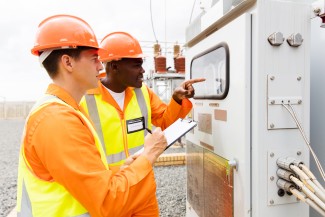As energy efficiency geeks, we here at ACEEE are deep into the numbers, publishing report after report on the quads and TWh and MMT CO2 savings from efficiency. We know these numbers and units represent major benefits for the nation, but sometimes we find it hard to explain—to policymakers, advocates outside of the energy world, and even our own families—what they mean for individual American families. We’re trying to change that.
Meet Melissa Ruiz of Philadelphia. Her daughter has asthma and was a regular at the local emergency room until the Green and Healthy Homes Initiative worked with city agencies to seal the air leaks in her home, fix the plumbing leaks, insulate the basement and make other repairs. The single mom’s utility bills have gone down, but more importantly, her daughter can breathe again.
In order to tell more stories like this, we are releasing three fact sheets today—one on families, one on jobs, and one on health and the environment—that talk about how energy efficiency benefits people like Melissa and her family. Together with an earlier piece on what energy efficiency is, they are intended to convey for broad audiences why people should care about efficiency.
The first shows how “Saving Energy Helps American Families.” Teri and John Norsworthy of Summerton, South Carolina saved money on their utility bills with help from their local rural electric cooperative. Using low-interest loans, the Norswothys were able to make home improvements that cut their electric bills as much as $200 a month, which helped them budget their fixed income. Our fact sheet also talks about how smart homes and better information give families more choice and more control over how they use energy, which we have found is important to many consumers.
The second shows how “Saving Energy Helps American Businesses and Creates Jobs.” Energy efficiency helps businesses, both by making them more lean and competitive, and by providing investment opportunities. Those opportunities in turn create jobs. The Department of Energy’s Industrial Assessment Centers provide a lot of good examples, including the Boral Bricks factory in Muskogee, Oklahoma. An Oklahoma State University team identified $79,000 in efficiency investments that saved them $63,000 a year. Go Cowboys! And, if you grumble at the gas pump, new truck standards are reducing the $75,000 in diesel fuel used by the average long-haul truck each year.
The third fact sheet discusses how “Saving Energy Improves Americans’ Health and the Environment.” Energy efficiency clears the air of pollution, which means better health for people (and pets and plants). Burning fuels causes not only asthma, like that of Melissa Ruiz’s daughter, but also lung cancer, heart attacks, and stroke. All of these conditions are reduced by increasing energy efficiency. And designing communities to give residents the choice to walk and ride bikes can reduce obesity as well as traffic.
As analysts, we could not entirely give up the broader statistics, like the cool $1 trillion that McKinsey & Co. found efficiency could save nationwide. But our focus here is on concrete benefits energy efficiency provides for real people.
We know there are many more stories out there. If you have a good story or example of how energy efficiency has helped specific people, please contact us or share it in the comment section below.


